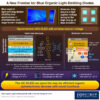Attosecond laser pulses in the extreme ultraviolet (XUV) are a unique tool enabling the observation and control of electron dynamics in atoms, molecules, and solids. Most attosecond laser sources operate at a pulse repetition rate of 1 kHz (1,000 shots per second), which limits their usefulness in complex experiments. Using a high power laser system developed at MBI we have managed to generate attosecond pulses at 100 kHz repetition rate. This enables new types of experiments in attosecond science.
Light pulses in the extreme ultraviolet (XUV) region of the electromagnetic spectrum, with durations on the order of 100s of attoseconds (1 as = 10-18 s) allow scientists to study ultrafast dynamics of electrons in atoms, molecules and solids. Usually experiments are performed using a sequence of two laser pulses with a controllable time-delay between them. The first pulse excites the system, and the second pulse takes a snapshot of the evolving system, by recording an appropriate observable. Usually the momentum distributions of ions or electrons or the transient absorption spectrum of the XUV pulse is measured as a function of delay between the two pulses. By repeating the experiment for different timings between the two pulses, a movie of the dynamics under study can be created.
In order to get most detailed insights into the dynamics of the system under investigation, it is advantageous to measure the available information about the time evolution as completely as possible. In experiments with atomic and molecular targets, it can be advantageous to measure the three-dimensional momenta of all charged particles. This can be achieved with a so-called reaction microscope (REMI) apparatus. The scheme works by ensuring single ionization events for every laser shot and detecting electrons and ions in coincidence. This, however, has the drawback that the detection rate is limited to a fraction (usually 10 to 20%) of the laser pulse repetition rate. Meaningful pump-probe experiments in a REMI are not possible with 1 kHz class attosecond pulse sources.
At MBI we have developed a laser system based on optical parametric chirped pulse amplification (OPCPA). In parametric amplification, no energy is stored inside the amplification medium; therefore, very little heat is generated. This enables the amplification of laser pulses to much higher average powers than with the current “work-horse” Ti:Sapphire laser, which is most often used in attosecond laboratories around the world. The second advantage of OPCPA technology is the ability to amplify very broad spectra. Our OPCPA laser system directly amplifies few-cycle laser pulses with durations of 7 fs to average powers of 20 W. This is a pulse energy of 200 uJ at 100 kHz repetition rate. With this laser system we have previously successfully generated attosecond pulse trains.
In many attosecond experiments it is beneficial to have isolated attosecond pulses instead of a train of multiple attosecond pulses. To enable the efficient generation of isolated attosecond pulses, the laser pulses driving the generation process should have pulse durations as close as possible to a single cycle of light. This way the attosecond pulse emission is confined to one point in time leading to isolated attosecond pulses. In order to achieve near-single-cycle laser pulses, we have employed the hollow fiber pulse compression technique. The 7 fs pulses are sent through a 1m long hollow waveguide filled with neon gas for spectral broadening. Using specially designed chirped mirrors, the pulses can be compressed to pulse durations as short as 3.3 fs. These pulses consist of only 1.3 optical cycles.



